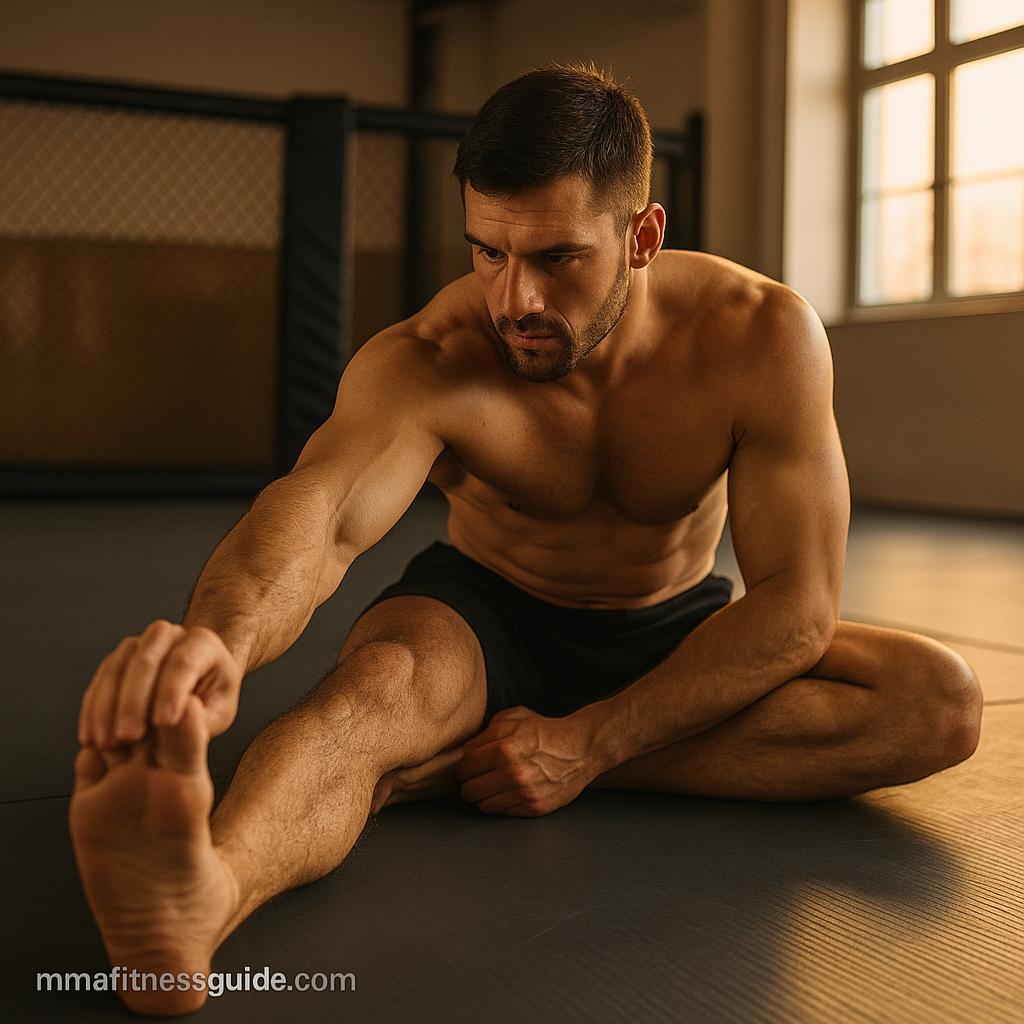
Flexibility: The Hidden Key to a Fighter’s Longevity
MMA fighters are built to strike, grapple, and explode — but behind every powerful movement lies something less visible yet equally vital: flexibility.
A flexible fighter moves fluidly, reacts faster, and is far less prone to injury.
Stretching is not just about touching your toes — it’s about keeping your body primed for the chaos of training and combat. Consistent flexibility work allows fighters to train harder, recover faster, and perform longer.
Why Flexibility Matters in MMA
MMA combines striking, wrestling, and jiu-jitsu — all demanding different ranges of motion.
Tight muscles limit your power, timing, and mobility.
Benefits of consistent stretching include:
- Improved kicking range and hip mobility
- Better guard transitions and ground movement
- Enhanced posture and balance
- Reduced risk of muscle tears and joint strain
- Faster recovery between training sessions
In short, flexibility is both a performance enhancer and an injury shield.
Understanding the Three Types of Stretching
1. Dynamic Stretching (Before Training)
These are controlled movements that warm up muscles and joints before intense activity.
They improve blood flow and prepare your body for explosive motion.
Examples:
- Leg swings (front-to-back and side-to-side)
- Arm circles and shoulder rolls
- Hip rotations
- Torso twists
- Light shadowboxing with full range of motion
Spend 5–10 minutes on dynamic stretches before every session.
2. Static Stretching (After Training)
Static stretches involve holding a position for 20–60 seconds.
They help lengthen muscles, release tension, and improve long-term flexibility.
Examples:
- Standing hamstring stretch
- Butterfly stretch (for inner thighs and hips)
- Pigeon pose (for glutes and hip flexors)
- Chest and shoulder opener
- Cobra pose (for lower back and abs)
Perform these post-training or during cool-down to relax tight areas.
3. PNF Stretching (Advanced Flexibility Training)
PNF (Proprioceptive Neuromuscular Facilitation) combines stretching and contracting muscles to enhance flexibility faster.
It’s especially effective for fighters recovering from stiffness or wanting to improve range of motion for high kicks or grappling transitions.
Example:
- Stretch a muscle group (e.g., hamstrings).
- Contract that muscle gently for 5 seconds.
- Relax and stretch deeper for another 10–15 seconds.
Use PNF only a few times a week, as it’s more intense on the nervous system.
Sample Full-Body Stretch Routine for Fighters
Pre-Training (Dynamic Warm-Up, 8–10 min):
- Jumping jacks – 1 min
- Leg swings – 10 reps each leg
- Hip rotations – 10 reps
- Arm circles – 15 reps
- Shadowboxing with full extension – 2 min
Post-Training (Static Cool-Down, 10–12 min):
- Seated hamstring stretch – 30 sec each leg
- Butterfly stretch – 45 sec
- Pigeon pose – 30 sec each side
- Shoulder cross stretch – 30 sec each arm
- Cat-cow stretch – 5 rounds
- Child’s pose – 60 sec
Add breathing and mindfulness during your cool-down to further aid recovery.
Targeted Flexibility Areas for MMA Fighters
- Hips: Critical for kicks, sprawls, and transitions.
- Hamstrings & Glutes: Affect guard movement and takedown defense.
- Shoulders: Prevent overuse injuries from striking and grappling.
- Neck & Upper Back: Essential for clinch work and absorbing impact.
If you neglect flexibility in any of these zones, you increase your risk of chronic tightness or imbalance.
Bonus: Yoga for MMA
More fighters are embracing yoga as part of their recovery and flexibility training.
It builds mobility, balance, and mental calm — all essential qualities for the octagon.
Recommended poses:
- Downward dog
- Warrior II
- Bridge pose
- Supine twist
- Reclined pigeon
A 20-minute yoga session once or twice per week can dramatically improve flexibility and focus.
Common Mistakes Fighters Make
- Stretching only when injured
- Skipping warm-ups before sparring
- Holding static stretches before explosive drills
- Ignoring breathing — tension reduces flexibility
- Focusing only on lower body, neglecting shoulders and neck
Remember: stretching isn’t an afterthought — it’s a crucial part of your training plan.
The Mindset of Flexibility
Consistency beats intensity.
Five minutes of stretching after every session is better than one long session once a week.
Over time, your range of motion, coordination, and power will all improve.
As Georges St-Pierre once said,
“The more flexible you are, the more you can adapt to any situation.”
That’s as true in combat as it is in life.
